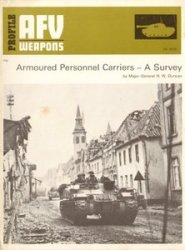State and Economy
Muhammad Ali (1769-1849) came to Egypt as part of the Ottoman force sent to expel the French who had occupied the country in 1798. With the French evacuation in 1801, the Albanian soldiers became one of the major power brokers in Egypt. It was against this background that Muhammad Ali emerged as a formidable political figure. In 1805 the Ottoman sultan had to name him the pasha (governor) of Egypt. The pasha’s ferocious campaign against the Mamluks in 1811-1812 finally secured his position.
Muhammad Ali hoped to bring Egypt up to par with European countries. A strong army, trained, equipped, and organized along Western lines, he believed, was essential in this regard. This was to be the pivot of most

The Mohamed Ali Mosque in Cairo. Completed in 1830, it was built as a half-scale replica of Hagia Sophia in Istanbul. © Das Fotoarchiv.
Of his policies. He invaded Sudan in 1820 to secure conscripts for his army. As this did not materialize, he turned to the Egyptian peasantry. To train their Turkish officers, a military school and a navy war college were respectively established at Aswan and Alexandria, both with European instructors.
Education, health services, agriculture, land ownership, and the tax system were all overhauled by Muhammad Ali. The educational system had previously operated along religious lines: Islamic, Coptic, and Judaic. Concerned with quickly producing the personnel needed for his programs, Muhammad Ali established state-run Western schools to train accountants, administrators, and for languages and translations. For the same reason, students were sent to Europe for advanced studies.
The Abu Za’bal, a military hospital, opened in 1827. Renamed the Qasr al-Aini hospital after it moved to Cairo in 1837, it served as a medical school. In 1837, it trained 420 medical students, many of whom went to France for specialization. In 1832 a school for midwives was opened in Cairo, to create a female medical corps. In 1837 a hospital was opened in Cairo for civilians. There were also free clinics in the major cities.
Egypt’s agriculture had traditionally relied upon the annual flood of the Nile. Muhammad Ali improved on this by constructing new, deep canals and by regularly maintaining the old ones. This increased the cultivable land by 18 per cent between 1813 and 1830 and made all-year irrigation and farming possible, especially, in the Nile Delta. There was also the introduction (in 1821) and spectacular increase in the production of long-fibered cotton, which was highly valued in Europe’s textile industries. These innovations resulted in higher agricultural output and a buoyant export commodity trade.
Muhammad Ali inherited a system of land ownership and taxation (iltizam, or tax-farming) system that benefited specific elites (the villages haykhs, religious leaders, and the Mamluks). In return for a fixed tax, they were granted tax rights over land. The tax was extorted from the peasants who cultivated the land; and the tax farmers were entitled to keep any excess beyond the set tax. This system and the tax exemption enjoyed by religious lands denied the state of considerable portions of the land tax and gave the tax-farmers a lot of leverage over the peasants. In 1816, tax farming was eliminated; taxes were now paid at the village level.
Under Muhammad Ali, the state controlled agricultural production as well as internal and external trade. The peasants were forced to grow crops sold only to the government at fixed prices, which were well below the market price. They then bought their foodstuffs at prices much higher than the original sale prices while the export commodities were sold abroad at substantially higher returns. Muhammad Ali himself controlled the bulk of Egyptian imports, and there was a state monopoly on grain exports.
Because of the agricultural, land, and tax reforms, higher taxes, state control of trade, and considerable expansion in international trade (notably with Europe), public revenues rose phenomenally and funded expansive military, social, and infrastructural (especially, communications and transport networks) projects. Intent on replicating Europe’s industrial revolution, Muhammad Ali established a formidable military-industrial complex producing armaments, uniforms, footwear, and frigates as well as sugar refineries, rice mills, tanneries, and textile industries, all dependent on European machinery and technical expertise.
Through Muhammad Ali’s reforms, Egypt became the most powerful and wealthiest of the Ottoman provinces. This outcome and his imperialist expansion, from Kordofan to the Red Sea and the Aegean Sea, troubled European countries. In 1838 London persuaded Istanbul to sign a treaty banning monopolies in the Ottoman Empire. This was important because taxes and profits from the sale of monopolized goods accounted for three-quarters of Egypt’s revenue. Equally devastating was the 1841 Treaty of London that eliminated Muhammad Ali’s empire in western Asia and also curtailed the size of the Egyptian army, the bedrock of his reforms. From then, the pasha lost the zeal and incentive for reform.
In the end, Muhammad Ali did not achieve an industrial revolution, nor did he bring Egypt to the same political and military status as the European powers. Even without British intervention, his policies were self-destructive. There was hardly any effort to win mass support for his policies. Instead, the confiscation of agricultural products, high taxation, and conscripting peasant labor for public works alienated the masses. Besides, Egypt lacked adequate financial resources (especially, after the 25 per cent decline in the export price of cotton in 1833) and skilled personnel to sustain the reforms; moreover, many of the Europeans in Muhammad Ali’s service lacked the expertise they claimed, leading to bad management and the failure of many projects. And there was the endemic bickering between Turko-Circassian officials and their Arabicspeaking subordinates.
The peasantry paid a very high price for whatever counted for Ali’s successes. It is also true that since the military and the civilian bureaucracy were dominated by Turko-Circassians, the indigenous Arabic-speaking Egyptians were very much marginalized by Muhammad Ali’s rule. Indeed, to him, Egyptians were simply serfs, only useful for his ambitions. Nonetheless, he endowed Egypt with the structural foundation which transformed it into a “modern” state.
Ebere Nwaubani
Further Reading
Cuno, K. The Pasha’s Peasants: Land, Society, and Economy in Lower Egypt, 1748-1858. New York: Cambridge University Press, 1992.
Dodwell, H. The Founder of Modern Egypt. 1931. Reprint, Cambridge: Cambridge University Press, 1967.
Heyworth-Dunne, J. An Introduction to the History of Education in Modern Egypt. London: Frank Cass, 1968.
Fahmy, K. “The Era of Muhammad ‘Ali Pasha, 1805-1848.” In The Cambridge History of Egypt. Vol. 2, Modern Egypt, From 1517 to the End of the Twentieth Century, edited by M. W. Daly. New York: Cambridge University Press, 1998.
Fahmy, K. All the Pasha’s Men: Mehmed Ali, His Army, and the Making of Modern Egypt. New York: Cambridge University Press, 1997.
Marsot, Afaf Lutfi al-Sayyid. Egypt in the Reign of Muhammad Ali. New York: Cambridge University Press, 1984.




 World History
World History









